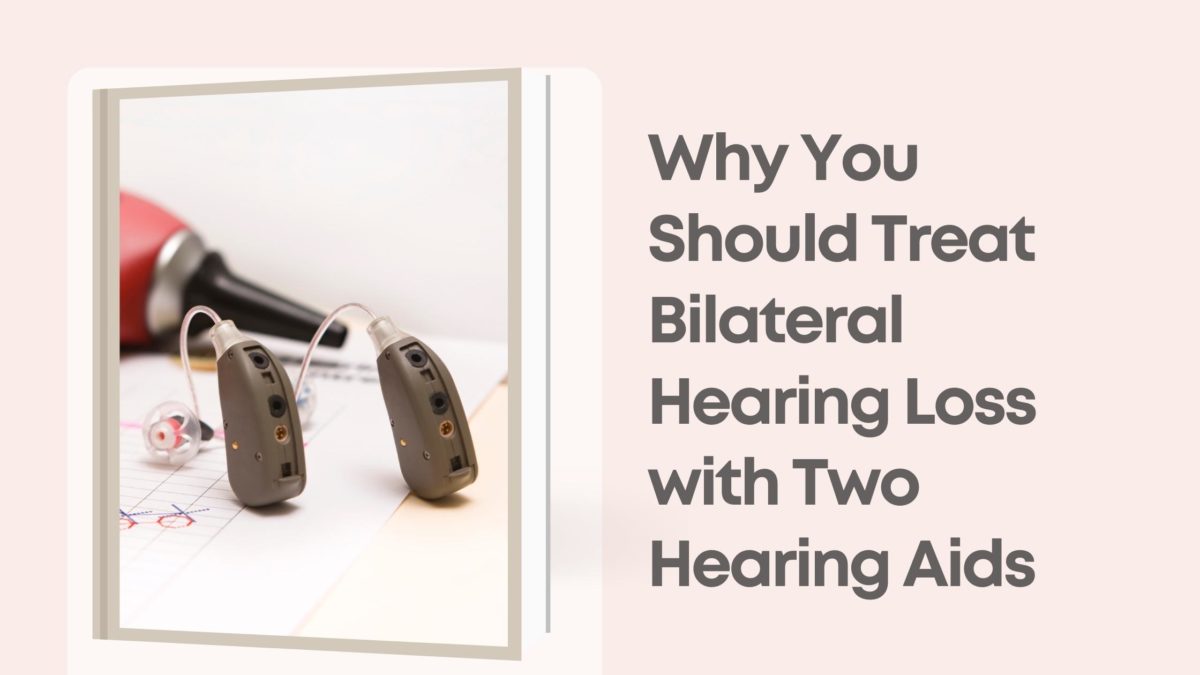If you have hearing loss and are seeking treatment, you may be wondering if one or two hearing aids are needed. Hearing loss is experienced in countless ways and exists on a spectrum. People often assume that because they can hear more clearly out of one ear compared to the other, referring to the “good ear”, this means they only need one hearing aid. But the reality of hearing loss is that impairment is more commonly present in both ears. The degree of impairment can differ between ears, being more severe in one and mild in the other. This type of hearing loss is known as bilateral hearing loss. This type of hearing loss is most effectively treated with two hearing aids which provide the auditory system with more support, maximizing hearing capacity and hearing health.
What is bilateral vs. unilateral hearing loss?
Hearing loss reduces the capacity to perceive and process sound. This can happen in just one ear or both. When it is one-sided, this is known as unilateral hearing loss. When impairment is identified in both ears, this is known as bilateral hearing loss. There is a range of degrees of impairment – mild to profound – and this can differ from ear to ear. When impairment is the same in both ears, this is described as symmetrical bilateral hearing loss. This differs from an asymmetrical bilateral hearing impairment which describes different degrees of hearing loss in the ears. Bilateral hearing loss produces various symptoms including the following:
- Tinnitus: a buzzing or ringing like noise in one or both ears
- Sounds are distorted or muffled
- Identifying individual words is challenging
- Asking others to repeat themselves or speak louder.
- Having difficulty localizing sounds, or understanding the direction the speech or sound is coming from
- Struggling to keep up with conversations in places with background noise.
People can experience these symptoms differently as they can be mild to severe, depending on the degree of hearing impairment in each ear. Bilateral hearing loss can make engaging in effective communication challenging which takes a toll on conversations. This can also impact relationships, social engagement, and work performance, as well as increase health risks.
What causes bilateral hearing loss?
The most common type of bilateral hearing loss is sensorineural. Sensorineural hearing loss occurs as a result of damaged hair cells in the inner ear. This can be caused by a range of factors including aging (also known as presbycusis), loud noise exposure, head injuries, and existing medical conditions. Hair cells in the inner ear play an integral role in how sound is processed and understood. These hair cells can become desensitized, becoming more vulnerable to dying. This then prevents them from performing their essential function, resulting in chronic hearing loss. The most common treatment for this type of hearing loss is hearing aids – electronic devices that are designed to absorb, amplify, and process sound.
Why should you use two hearing aids?
The most effective way to treat bilateral hearing loss is with two hearing aids. You are likely wondering why, if hearing loss is more present in one ear compared to the other, you would need to wear two hearing aids. Well, two hearing aids allow both ears to maximize their hearing ability. This provides the brain with more auditory information, making it easier to process incoming sounds.
Once the exact needs of each ear are determined, your hearing healthcare specialist can program hearing aids to specifically meet those needs. Wearing two hearing aids offers major benefits including:
- Increased speech recognition: wearing two hearing aids allows users to absorb more auditory information including speech which makes it easier to process, this is especially useful in environments that are tougher to hear in (restaurants, parties, etc.)
- Strengthened sound localization: people are also better able to hear and detect where sound is coming from both ears.
- Better sound quality: hearing aids amplify and clarify sound. Wearing two devices delivers optimal sound quality.
- Maximizes hearing: having increased capacity to hear with both ears strengthens overall hearing. This allows people to participate in conversations and navigate social settings with greater ease.
Wearing two hearing aids transforms hearing health. Contact us today to learn more about treating hearing loss and the benefits of hearing aids.

